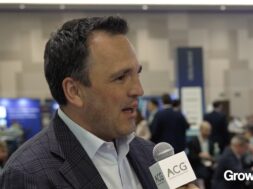Upgrading Tech and Finance to Jumpstart Portfolio Growth
Investors and operators discuss how to set up new acquisitions for success

Private equity investments come with a ticking clock—a constant reminder that time is wasting, and growth initiatives should have started yesterday.
Yet there are ways to jumpstart that growth through careful planning and execution, along with upgrades to technology systems and the finance function, according to speakers on the “Preparing PortCos for Growth—PE Perspective” panel at ACG’s recent virtual Operators’ Summit: Accelerating Value Creation, held last month.
John Bevacqua, president and co-founder of EPG, moderated the discussion, which featured Matt Dietrich, CEO of Alco Manufacturing, Gabe Mesanza, partner at Huron Capital, and Alex Rafla, principal at Clarendon Capital.
The first step to preparing companies for growth is to create an effective strategic plan, although the panelists warned that the devil is in the details.
“The pivot from a very well-defined strategic plan into how you get it done and get a business growing can be formidable,” said Dietrich, whose company is backed by MiddleGround Capital.
He recommended breaking down the plan into executable tasks, and creating an operations plan that includes clearly defined metrics, timetables and tactical actions. The first 30 days leading a business should be focused on learning. If you’ve done a good job creating the strategic plan, he added, you can quickly move to implementation. By the 90-day mark, the business will likely be ready for the optimization phase of the plan, where the team can continue to refine and improve on its efforts.
Effective Tech
The 100-day plan for a new PE acquisition almost certainly includes upgrades to technology. Customer relationship management (CRM) software, in particular, has become an essential part of the sales function. But for Mesanza, implementing an effective process should take priority over a fancy new system.
“Very honestly, you can spend a whole lot of time and effort putting in place something like Salesforce, or something of that nature,” he said. “I’m very happy to run a pipeline on shared Google Sheets as long as the process that’s being followed is appropriate”—that is, if users are identifying leads, the amount of revenue and margin, and the likelihood of closing a sale. “Once you have those processes in place, you can then think about: What CRM would I put in place?” Mesanza said.
Related content: Why Your Business Development Needs a Tech Stack
Harnessing effective technology has become critical to meeting private equity’s ambitious growth objectives. Rafla noted that Clarendon Capital generally looks to quadruple the size of the founder-owned businesses in which it invests, through a combination of acquisitions and organic growth.
“Technology has to be a key component of your growth plan, because most of the time, the technology that got you where you are today is not the technology that’s the right fit for an organization 4x the size,” he said. “There are only so many people you can throw at a problem and you really need to think thoughtfully about making an investment in the right technology—whether that be an ERP (enterprise resource planning) system or CRM system.”
Those systems should communicate with each other seamlessly, yet Rafla often sees businesses where that’s not the case. “As you scale, you need to be able to break down those siloes to really manage all the growth that’s occurring in the business,” he said.
A Head Start on Finance
There are only so many people you can throw at a problem and you really need to think thoughtfully about making an investment in the right technology.
Alex Rafla
Clarendon Capital
Much like how technology systems need an upgrade, a company’s finance function likely has room for improvement. Mesanza noted that Huron often buys companies that are still using QuickBooks or have a controller who’s acting as a CFO.
As part of the transaction process, he said the firm has begun asking its quality of earnings provider to field what it calls a “finance ops team.” As the team digs through the company’s chart of accounts and evaluates the quality of earnings, it also looks at things like how the books are closed, and how to get information to create tracking models for reporting internally and to investors.
“By the time the deal closes, we pretty much have the tracking model created, we have a close calendar that we normally already socialized with the finance organization,” Mesanza said. He added that typically Huron will hire a CFO on an interim basis or start a search even before the firm buys the company.
Using a third party in this way has given Huron a jumpstart on its work with the portfolio company, Mesanza noted. “One of the first things we do is on the finance side, because we’ve wasted a significant amount of time—and a fair amount of our associates’ and analysts’ time—essentially digging up the chart of accounts to figure out financials and things of that nature. It’s just not value-added work for us as a sponsor. It has to happen, and so we’ve just said that we’re going to fund it up front and we’re going to get outside help to go after it.”
Best-Laid Plans
Upgrading technology systems and creating an efficient finance function are ways to set up a newly acquired organization for success. But even the most thought-out approach can be thwarted by unforeseen challenges. Or, as Mesanza put it, quoting boxer Mike Tyson: “Everyone’s got a plan until they get punched in the face.”
A common challenge comes when the operations teams can’t keep up with what’s being sold by the newly expanded sales force. And when a company introduces too many new efforts or tries to do too much at once, things can fall through the cracks.
Related content: To Drive Value in a Down Market, Get Back to Basics
According to Rafla, some Clarendon portfolio companies use project managers to oversee the various initiatives and hold people accountable. Meanwhile, assigning executive leaders to large initiatives allows each to have a single owner.
New initiatives can take time to mature and become effective, Mesanza added. Huron has used intermediate checkpoints to understand whether an effort is working or not and what to do about it, rather than changing course or halting the new activities that don’t take off immediately.
Novel directives also pose the risk of frustrating salespeople, particularly if they feel the company is diverging from its promise to customers.
Dietrich said he’s seen this angst firsthand, and recounted how he advises his salespeople: “I always tell my sales guys, ‘The most powerful force in any company is a sales guy with an order.’ And if you want change and you want things to happen quickly and better, and you walked in with a customer commitment to something, that is the tool that breaks down all barriers.”
Katie Mulligan is the editor-in-chief of Middle Market Growth.


